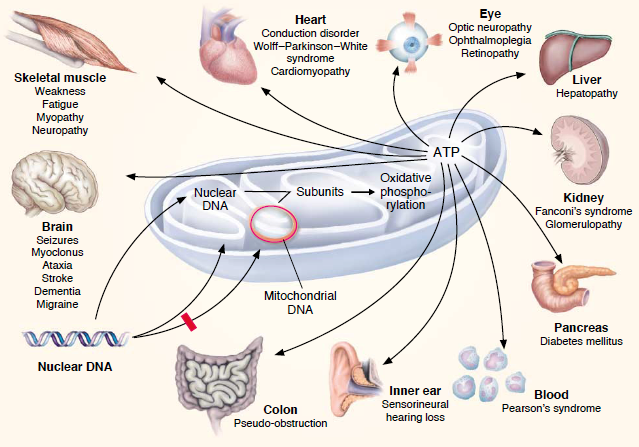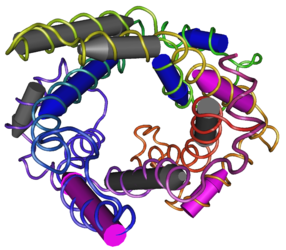Uncoupling Protein 2
From Proteopedia
(Difference between revisions)
| Line 24: | Line 24: | ||
== Function == | == Function == | ||
| + | Uncoupling Protein 2 (UCP2) is found throughout the body in many tissues, mostly being expressed in the spleen, lung, kidney and in insulin-producing pancreatic islet β cells. While it’s exact function is still unclear, there is increasing amounts of evidence which suggests its main functions include mitigation of reactive oxygen species (ROS) generation and regulation of insulin release.<ref>Sivitz, W. I.; Yorek, M. A. Mitochondrial dysfunction in diabetes: from molecular mechanisms to functional significance and therapeutic opportunities. https://www.ncbi.nlm.nih.gov/pmc/articles/PMC2824521/.</ref> The mitochondria produce large portions of the cell’s overall ROS. UCP2’s function is to bring upon a defense mechanism which diminishes mitochondrial ROS formation by the complexes I and III. As for insulin secretion, UCP2 is considered a negative regulator for insulin secretion. This is because ATP generation is essential for the process of opening potassium ATP channels which allow calcium and insulin to be released from storage granules. UCP2 acts to deplete ATP productions which ultimately effects these ATP/ADP ratios that controls insulin secretion. When UCP2 is inactivated, the ATP/ADP ratio increases leading to the activation of glucose-induced insulin secretion. When UCP2 is overexpressed, insulin secretion is decreased. | ||
| + | |||
| + | |||
[[Image:286px-MMDB_ID_92271_PDB_ID_2LCK_Mitochondrial_Uncoupling_Protein_2.png]] | [[Image:286px-MMDB_ID_92271_PDB_ID_2LCK_Mitochondrial_Uncoupling_Protein_2.png]] | ||
Revision as of 03:15, 15 April 2019
Uncoupling Protein 2 (UCP2) in Diabetes
| |||||||||||
References
- ↑ Mitochondrial Disorder Medical Information. http://www.mitoaction.org/medical-information.
- ↑ Luft, R.; Luthman, H. Physiopathology of mitochondria. From Luft's disease to aging and diabetes. https://www.ncbi.nlm.nih.gov/pubmed/8366714.
- ↑ Maassen, J. A.; Leen; Hart; Essen, E. van; Heine, R. J.; Nijpels, G.; Tafrechi, R. S. J.; Raap, A. K.; Janssen, G. M. C.; Lemkes, H. H. P. J. Mitochondrial Diabetes. http://diabetes.diabetesjournals.org/content/53/suppl_1/S103.
- ↑ Sivitz, W. I.; Yorek, M. A. Mitochondrial dysfunction in diabetes: from molecular mechanisms to functional significance and therapeutic opportunities. https://www.ncbi.nlm.nih.gov/pmc/articles/PMC2824521/.


